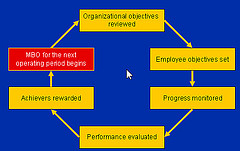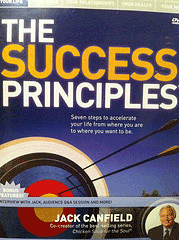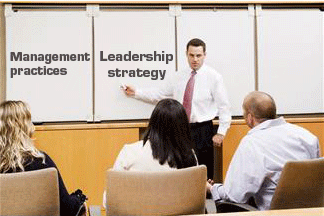Browse by Tag
- "Real" Innovation (2)
- Alignment (6)
- Business Innovation (9)
- Business Plan (2)
- Business Plans (1)
- Creativity (24)
- Critical Success Factors (4)
- Entrepreneurship (9)
- Global Competiveness (4)
- Human Side (11)
- India (1)
- Innovation (4)
- Innovation Consulting (18)
- Innovation Killers (3)
- Innovation Management (18)
- Innovation Tools (17)
- Innovation Training (24)
- Innovations (7)
- Inventions (16)
- IT Innovation (1)
- Leaders (5)
- Leadership (20)
- Leadership Development (13)
- Organizational Leadership (2)
- Organizational Strategy (20)
- Personal Values (6)
- Prediction (5)
- Strategic Innovation (38)
- strategic planning process (4)
- Strategy (3)
- Training (1)
- Vision (5)
- Weekly Dose (8)
Posts by Month
- 2014
- 2013
- 2012
- 2011
- 2010
- 2009
- 2008
- 2006
5 Important Innovation Change Questions
In our experience at the DeSai Group, when dealing with innovation as a major change initiative, employees seek answers to these five questions:
- What is happening with the innovation program?
- Why are we pursuing innovation as a major change?
- When is it going to happen?
- How will I be impacted during the rollout and after implementation?
- Where can I go with more questions, issues, and concerns related to the innovation program in my area?
What if we do not communicate to staff?
If these questions are not answered, you are leaving it to chance for employees to create their own interpretations, leading to possible negative consequences and waste of your valuable resources.

Communication Plan Template
Your high-level communication plan may include these points:
- Develop answers to the five questions. Then make sure the questions are addressed in every innovation initiative communication document, meeting, and webcast.
- Develop a one-minute message--your elevator pitch about the innovation program. It should describe the business case and vision for the future.
- Demand consistent dialog at all levels, especially middle management.
- Use multiple media to teach and tell--remove uncertainties and doubt from day 1.
- Clearly identify the objective of each communication: awareness building, skill development, network development, employee engagement, and so on.
- Check often for alignment of process objectives and productivity for the parties in the communication activity.
- Be open to examine and test for what people hear.
- Actively respond to feedback and make adjustments to the plan as required.
Communication, Communication, Communication
Don't underestimate the need to repeat the messages even when you know everyone has heard them time and again. Even with your best efforts, there are always many who will not understand the importance of the innovation change initiative.
There have been stories where after six months of implementation activities, senior executives have publicly asked, "Why are we doing all this innovation stuff?". Although this raised a few eyebrows, the question was taken seriously and led to rather thorough discussions of the whys that had not surfaced before.
The Takeaway
Innovation is about approaching products and processes in a different way. The communications surrounding the innovation effort require different methods as well.
Over to you. Please comment below.
- How do you disseminate information about your innovation change program?
- What else would you add to the communications plan template?
- What other questions do you find that employees tend to ask?
Strategic Acquisitions - Telecommunications Case Study
Everything is connected to everything. Everything is moving from large, to small, to micro, to nano. That means computing power in the palm of our hands and soon in our blood cells.
In order to turn data into information and knowledge, we need telecommunications. As an example, one of the largest growing fields is the convergence of 2-D data and entertainment. The convergence requires much larger and more efficient communication pipelines. Not everyone needs the same pipeline of services. Therefore, the Telecommunications industry must respond with customized communication services for any rich-media object. That means, for anyone in the world, at anytime, all the time, in any direction.

Client Situation
Let's take a look at a US Based, Telecommunications company with 9,000 employees, operating in 34 states plus one international operation.
They sought DeSai's help to develop new service offerings. Organic growth was their focus although they were open to acquisitions that would bring capabilities the company sought for wireless communications. The company asked DeSai to validate the targets before it spent hundreds of millions of dollars on the acquisitions.
DeSai Approach
The DeSai team dug deep into what jobs customers were really trying to get done in the target market by conducting interviews, implementing surveys and performing observational research.
The work resulted in the conclusion that customers were seeking to accomplish a set of jobs involving much different performance dimensions than what the client had originally envisioned.
DeSai Recommendation
DeSai recommended acquiring the capabilities to address the jobs from one of several struggling (and inexpensive) firms, rather than the high-priced acquisition target the firm was considering. Why? Because of the different capabilities identified during the vetting process.
Results Are The Measure of Innovation Success
How did applying the DeSai Body of Knowledge impact the company?
- DeSai's recommendation saved the telecom client millions of dollars in acquisition costs while showing the company an inexpensive route to acquire the capabilities it really needed to address the right customer jobs-to-be-done.
- Client achieved 22% top-line growth in first three years.
- 15% net contribution to the bottom line during the first three years resulting from the innovation program/process.
The Takeaway
Change your innovation culture to allow validation of key assumptions before committing large amounts of resources to a project.
Your Turn. Please comment below.
- What is your system of checks and balances for vetting possible acquisitions?
- How is convergence impacting your business opportunities?
- Do you prefer organic growth or acquisitions to increase the size of your business?
How to Define Innovation Objectives and Innovation Goal
To help facilitate a strong leadership conversation about innovation objectives and innovation goals, here are some examples of why you might choose to enable an innovation engine for your organization:
- To differentiate your organization in the marketplace
- To build customer loyalty
- To identify savings potential
- To achieve revenue potential
- To accelerate exploitation of new business ideas worthy of pursuing
- To a build climate and culture of innovation as per the organization's innovation mission
- To become a leading innovation brand for products and services in the markets served and new markets you may serve
- To improve and expand current products and services
- To access new technologies
- To access new markets
- To identify market trends
- To improve product quality and associated core processes
- To improve employee attraction, engagement, and retention
- To develop new competencies

Defining the Innovation Goal
The innovation goal should be visionary and exciting. It should be something that has not seen before, measurable at least once per year (eventually more often), customer focused, and ultimately delivering value (top line, mid line and bottom line).
Following are some examples of innovation goals:
- Increase the product pipeline from x to y, to grow the top line by 5% better than your sector's GDP.
- Annually achieve 25% additional margin from new customer-driven services.
- Increase the top line every three years by 25%.
- Double the top line and bottom line every three years.
- Achieve 25% of the top line from new services created within the past 24 months.
- Develop new customer-driven products from the top ten customers that will increase net margins by 5% every year.
- Build a new S-Curve: Invent a completely new business with a new category of offerings.
- Improve customer acquisition ratio by 15% every year for the next three years.
- Achieve a customer satisfaction index (CSAT) (or some other best practices method such as net promoter score (NPS) score of 6.0 out of 7.0 (85% or better).
- Achieve 25% net profit from 3 new businesses and 25 new current product enhancements in the next five years.
- 1% profit before income tax (PBIT) above the current PBIT targets.
- Top customers rate us as most innovative in markets and categories we serve.
- 2x/3y: Grow 2x every three years, both top line and bottom line.
- 3/30/3: Within three years achieve a rate of 30% new revenue from products/services introduced in last three years.
- 20/20: 20% of new business (top line) should come from 20% of new customers every year.
- 10/20/30: Ten new offerings that yield 20% growth in revenue and 30% growth in profitability.
- 50% of all products should be engineered or should include technologies from outside the firm by 2020.
These are good examples of innovation goals to consider. Use the list to engage senior leaders in dialog, debate, and consensus. Then, define innovation goals for your company and for each business unit.
If your innovation initiative is for the entire enterprise, one goal should be directly linked to the business strategy.
If you are rolling out innovation only in your own business unit or information technology department, the goal should be aligned to the area's business or operational strategy.
Whatever you choose as your innovation goal, it should be fixed for a minimum of three years. At the end of three years, you can always enhance it or pick an alternative.
The Takeaway
To communicate the innovation agenda to your organization you must first clearly define the innovation strategy, objectives and goals.
Over to you. Please comment below.
- How do you plan to motivate your company's employees to generate innovative ideas and products?
- What is your goal for company innovations in the next 12 months?
- What other items would you add to the above lists?
22 Principles of Innovation
Based on the last 25 years of working with local and global firms, The DeSai Group we has identified a22 Principles of Innovation. We have divided them into three categories: Organizational Success Principles, Individual and Team Success Principles and Leadership Success Principles.
When embraced, these principles create a significant difference when searching for innovations or venturing for new businesses. These principles are industry agnostic. Based on your industry, company culture, and business context, some may have more importance than others. They are all crucial in a great program design. You will need to uphold these as truths and make sure they take deep roots from day 1.

Organizational Success Principles
1. Seek innovation to alter or identify new business models. Due to the abundant number of convergences in products and industries, there is more white space today (in every sector) than ever before. Old business models are dying fast. Challenge your current business model, and perform acts of creative destruction. Work from the future back.
2. Listen for 360-degree voices. Your customers and partners are communicating their unmet needs faster and through a variety of media. Learn to listen faster. The voice of the customer alone is no longer enough. You must empathize with customers and gain new insights for their emerging and unmet needs.
3. Develop an innovation charter that defines innovation for your business. Tell everyone why it is important and what is expected of each individual at all levels as behaviors of innovation. Allow everyone to see themselves in your innovation vision.
4. Focus on developing microclimates for innovation, not the culture of innovation. This means you must find ways to make teams innovative. As more teams become innovative, culture will take care of itself.
5. Integrate innovation behaviors into your human resources performance management process.
6. C-suite and senior leaders should role-model innovation behaviors expected of others.
7. Provide basic innovation education to as many people as possible, and provide extended training to help build intrapreneurs. A good target ratio is 1% to 2% (develop 50 intrapreneurs if you have 5,000 non-factory employees).
8. Focus on fast experiments. Develop 90-day experiment plans for ideas that come from teams across the organization. Some of these ideas will surely drive powerful outcomes for your customers.
9. Define stretch challenges with a vivid vision of a future that is believable. Bigger challenges bring the best innovators forward. Real intrapreneurs are those who need stretch challenges and the freedom to test their wacky ideas-that is their currency. Liberate them to fail fast and discover ways to serve your customers. Give them candid feedback and recognize them quickly, no matter what the outcome for an experiment or a pilot. When they produce results, reward them handsomely.
10. In the beginning, provide access to off-budget funds for those who can work on challenging problems and produce fresh new solutions for growth.
11. Manage the idea bank closely-the bigger the pipeline (quantity and quality), the better the future.
Individual and Team Success Principles
12. Promote cross-functional volunteerism. Research shows that the majority of your employees bring only a portion of themselves to work. This means there is unharvested organizational potential waiting to be leashed. Allow anyone to form cross-functional teams for their great ideas. Diversity of thought is the catalyst for ideas. What any one person sees is only apart of what needs to be seen.
13. Teach people how to make what is invisible visible. No one person can see the future as clearly as a team of intrapreneurs can. Humans can see only through a lens of their past experiences. This means they never see a full reality of a situation. This thought can be humbling and, at the same time, very energizing for your best talent.
14. Learn to ask new questions before generating new ideas. Most organizations are solving the wrong problems in today's fast-paced world.
15. Prototype fast-think design on day 1. Always promote action over analysis. Sitting in the corner office idealizing issues and solutions is less effective than two people role-playing the situation for new insights.
16. Diverge then converge. Then do it again. Then do it once more. Three cycles will improve the clarity of an idea as it moves along the innovation pipeline. The very best ideas will survive.
17. Greenhouse ideas. At the very early stages, ideas must be protected just like a seed has to be protected for a plant to grow. Never dismiss an idea. Put them all in a greenhouse and protect them so they don't get shot down. Keep playing with them. It might take a few weeks or months before they are ready to be shared.
Leadership Success Principles
18. Show everyone how to derisk the future. Taking no risk can lead to stagnation. Not taking enough risk can create commoditization and price wars. Taking just enough risk at the right time can lead to market differentiation; that is called derisking the future.
19. Create healthy discontent. Provide stretch challenges and demand breakthrough solutions-once in a while. Most work is incremental. Your best innovators get bored easily. Often they are most sought after for all incremental challenges. Manage their intellectual capital between easy and complex assignments. This will keep them engaged and at peak levels of performance.
20. Communicate how innovation decisions will be made. Create an environment of transparency for idea generation, evaluation protocol, funding and experimentation.
21. Implement a reward and recognition policy that encourages proper behaviors for all, especially middle management.
22. Exhibit personal passion for innovative thinking and creativity.
The Takeaway
Innovation is a large opportunity in all organizations. However, it requires persistence, a plan and engaged employees to succeed.
Your turn. Please comment below.
1. What other innovation principles would you add to the list?
2. Which category do you feel is more important than the other two categories?
3. Do you find these principles to be industry agnostic?
Five Power Skills For Discovering Radical Ideas
 On October 22, 2013 Professor Vijay Govindarajan and I co-authored a blog about Discovering Radical Ideas for the Harvard Business Review Blog.
On October 22, 2013 Professor Vijay Govindarajan and I co-authored a blog about Discovering Radical Ideas for the Harvard Business Review Blog.
In the article, we outlined a five-step process to create a consistent flow of "big" ideas to transform your business for the challenges it will face in the coming years. Here is the beginning of it:
Innovation starts with new and novel ideas. Over the last 20 years, we have worked with many world-class brands to help find their next "big thing." During the initial phases of our work together, it becomes obvious that they have plenty of good ideas. Finding ideas is never the problem - initially. The challenge is finding radical ideas consistently year after year.
When we surveyed over 300 global executives between 2008 and 2009, one of the primary concerns they expressed was their inability to compete long term without a solid innovation engine that can grow their top line. In order to do this, your company needs a process to source radical ideas that can catapult your business to new heights, open up new markets, or bring in completely unfamiliar profit streams.
Intrapreneurs Must Reference World Authorities To Build Proposals
Intrapreneurs are the purple horse in the room. They are working as entrepreneurs within a larger enterprise. Gifford Pinchot III coined the term Intrapreneur to describe them. They want to innovate. Often, corporate culture limits or prevents their ability to succeed.
Business Cases and Proposals Need Research
When I teach intrapreneurs to certify them in the DeSai body of knowledge they learn to create a business case. To turn that case into a full-blown, well researched proposal the intrapreneur needs to reference credible worldwide authorities.

My Favorite Sources
20 of my favorite sources are shown below. These sources are universal. They can be used by for profits and non-profits, large companies as well as small ones. Good luck and may "the force be with you" during your research process.
| 1 | Worldmapper Project
Provides cartograms - maps where countries are resized according to a range of economic, social, demographic and resources criteria |
| 2 | World Trade Organization
Trade statistics, trade news, economic research and publications |
| 3 | World Economic Forum
Research on wide range of issues related to its agenda; also organizes Davos summit annually dealing with global issues |
| 4 | World Bank
Economic and financial statistics, including commodity prices |
| 5 | Wikipedia
Open-source based online encyclopaedia, which is a good first lead for information on many topics BUT always check references and data wherever possible |
| 6 | US Bureau of Labor Statistics
Research and statistics on all aspects of the labor market in the US, plus international comparisons |
| 7 | United Nations
Data and reports relevant for many trends including economics, demographics, Millennium Development Goals |
| 8 | Strategy & Business
Surveys, articles, publications on a range of business topics, on both the Booz site and Strategy & Business site |
| 9 | RAND Corporation
Research areas include security, international affairs, science & technology, health, infrastructure |
| 10 | PriceWaterhouseCoopers (PWC)
Consulting/Accounting firm offering research/publications on range of business topics |
| 11 | Org. for Economic Cooperation & Development (OECD)
Publications and statistics on economic and social issues, including macroeconomics, trade, education, science, innovation |
| 12 | McKinsey Quarterly
Surveys, articles, publications on a range of business topics |
| 13 | McKinsey
Surveys, articles, publications on a range of business topics |
| 14 | International Labour Organization (ILO)
Information and news on international labour standards and human rights; provides international labor statistics and research |
| 15 | IMF
Range of time series data on GDP growth, inflation, unemployment, payments balances, exports, imports, external debt, capital flows, commodity prices, more and other economic and financial indicators |
| 16 | IMD
Research, articles and information on critical business topics and issues; and home of the World COmpetitiveness Center |
| 17 | IBM
Range of research, particularly related to technology industry |
| 18 | European Commission Eurostat
Publications and statistics on economic and social issues, including macroeconomics, trade, education, science, innovation |
| 19 | CIA
World Factbook offers basic but useful country information; other reports cover security related matters e.g. fuel use |
| 20 | Boston Consulting Group
Surveys, articles, publications on a range of business topics |
The Takeaway
Excellent research sources help an Intrapreneur change an idea from "I know I am correct" to "of course our company must adopt your proposal."
It is your turn. Share your wisdom. Please comment below.
- What are your indispensible research sources?
- What techniques help you best prepare a persuasive proposal for higher management?
- What is the relationship between the perceived risk of the opportunity and the length of the proposal you submit?
Microsoft Innovative - YES according to AD in WSJ
Microsoft is famous for its back story of a couple of nerds who changed personal computing for the entire world. They went from a few thousand dollars in revenue to$70 billion in revenue each year. They must have been innovative to accomplish such a feat and have $77 billion in the bank. They just spent $7 billion of that hard earned cash to buy Nokia's Devices & Services business.
READ MY LIPS - WE ARE INNOVATIVE
Then, why did they have to point out not once, but twice about innovation in their full page ad on the back page of Section A in the Wall Street Journal? Here are the two quotes with emphasis and commentary added by me.
"By bringing together these great teams together, Microsoft will be able to deliver more choices and faster innovation to consumers in phones and smart devices of all kinds"
I thought a couple of years ago that Microsoft gave billions of dollars to Nokia and its CEO Stephen Elop (a former Microsoft executive) to accomplish the task already. Microsoft and Nokia were already joined at the hip as partners when Nokia gave up its own operating system in favor of Windows.
Staples has the "Easy Button." Perhaps, Mr. Elop has the "Innovation Button."
"Together, we will create more unified development, manufacturing, and marketing efforts to bring innovation to market with greater efficiency and speed."
The market did not think so, and erased 4.6% of Microsoft's share price after the announcement. That decline in share price pretty much wiped out the nice bump in Microsoft shares after CEO Steve Ballmer indicated he would retire within 12 months.
A THIRD EXAMPLE OF PUTTING YOUR MONEY WHERE YOUR MOUTH IS
Ballmer went on to say in a Wall Street Journal story on the same day,"For us to really fulfill the vision for what we can do for our customers, we have evolved our thinking."
Very recently Ballmer announced the "devices and services" approach at Microsoft after a major reorganization of the 100,000 person company (now 132,000 after Nokia acquisition). Sounds like he is going all in for devices. Other than the X Box gaming device, Microsoft does not have a successful record creating hardware. See Surface Tablet and Microsoft's recent $900 million write off for unsold inventory.
The Takeaway
You need an Innovation Engine to help create an ecosystem of innovation. You cannot decree it, you must work hard to create it.
Your turn. Tell me what you think. Please comment below.
- Does your business have a culture and climate of innovation?
- What is the most innovative new product or service your company has created in the last 5 years?
- Do you feel that Microsoft and Nokia can out innovate Google's Android platform and Apple's iPhone platform?
Convergence Drives Strategic Planning in 2013 - Part 2
Part Two: Global Scale "Convergent Thinking"- The New Main Course?
The need for "convergent thinking" is not only still on the table, but may well become the centerpiece of strategic planning for many organizations. But, just because this trend is rapidly growing, doesn't mean it's an easy road to success.
Markets are fickle. They can seem to arise overnight and die off as quickly. Studies indicate 60% of employees are disengaged and frustrated with their work and too many executives are still relying on management practices rather than leadership. This only serves to complicate the risks of innovation, not to mention what it can do to a new market entry strategy. Many organizations need to begin right here with a leadership strategy to create a more engaged, innovative and stable workforce.

Add to that the need for an aligned vision and necessary support structures to navigate the convergence of commercial enterprise with governments and NGO's, and the risks of moving into new consumer groups, platforms and new geographies, can be daunting. What shifts are necessary to consider when moving globally and what internal support is required? How ready are you to innovate?
When moving from marketing partnerships on local levels to sustainable global markets, any undertaking in international development must consider the growing role of cross-sector convergence. This entails not only possibilities for new and broader markets as technologies and business sectors converge, but must also consider how convergence is playing an increasingly key role in forming solutions to the world's most pressing issues in developing countries.
Commercial self-interest, NGO's and governments are increasingly coming together to find solutions. These hybrid organizations are challenging today's sector boundaries and outdated paradigms as never before, shifting the emphasis away from income, organizational structures and stereotypical roles. With a growing awareness that markets are inextricably linked to solutions for problems such as extreme poverty, drought, and disease in developing countries, considerations of impact and outcome are coming to the fore.

To satisfy business self-interest in new markets, a global sense of community must emerge from the global development of markets. Success in the Emerging Market Economy is a combination of access to customers and resources plus willingness and a plan to help build sustainable communities.
When it comes to the global marketplace, business, government and NGO's all see global development as the best way to create opportunities for millions of people to secure a decent life and increase prosperity. If you want the resources and the market, you must help build the surrounding sustainable community to support it.
License to operate must contain certain elements to succeed, varying by region and company size, including:
- Compliance with law
- Risk management
- Reputation enhancement
- Value added to communities
Companies must address sustainability factors from human resource management and respect for local cultural values to eco-efficiency and social responsibility including helping to limit climate degradation and loss of biodiversity. For example, as viewed on the Chinese cable network in the past few weeks, workers are rising up in protest of environmental degradation. Very simply, they too want to breathe clean air, drink clean water and be treated with respect. Good working relationships at all levels help create a more even road for sustainability.
The business case for sustainability in emerging markets can actually work to pinpoint opportunities in Asia, Africa, Central and Eastern Europe, Latin America and the Middle East, but be aware responsible business conduct needs to step up. To develop new global markets built on ever expanding cross-sector convergences, strategy must now include linking to the communities involved. It's looking like these markets will arise from the convergence of solutions built on innovative relationships responding to converging challenges and employing new approaches. Hiding behind outdated management practices - no longer an option.
What are your challenges and what value do you see in utilizing an Innovation Readiness Assessment for strategic planning?
Convergence Drives Strategic Planning in 2013 - Part 1
Part One: What's on Your Strategic Menu? - Some Factors to Consider
Domestic and international politics, finances and markets loom large in organizational planning in 2013, but the trend towards global development remains a constant in this convergent economy. Global development is expanding, and an important factor to consider when planning and developing strategy for new markets and sustainable innovation models. With resources and markets scattered all over the globe, if you're in business, you're global, at least on some level.
When it comes to planning and global markets, leadership needs to consider the driving forces of convergent economies. For businesses with traditional organizational structures and stereotypical roles this brings continuing challenges. To facilitate forward movement they will likely be required to allow new ideas to find form and implementation. As convergence gains momentum, this primary leadership competency of strategically allowing flow and change becomes no longer optional, but necessary to design an organization's desired future.
With commercial businesses, governments, and NGO's increasingly finding the need and desire to converge to facilitate global development, grow the global economy, attain global resources, and manage suppliers, customers, employees, partners and technologies, these new strategic alliances will continue to blur lines. These collaborations will for instance, create new issues and challenges for stakeholders, funding, competition, growth opportunities, to cite just a few.
Within old markets innovation is essential to survival. New ideas are copied so easily across single sectors, that far from being a fad, innovation is vital to existence. Whether talking automobiles in the US market, opening new Asian markets for products, or even fundraising for non-profits, new ideas become global property in a sense, as soon as they see any form of media, so acting fast and decisively is a priority; and then be ready to do it again and again. In other words, keep acting like an entrepreneur, Think Small and Fast.

Customer driven innovation is apparent in the new Ford Escape with it hands-free lift-gate. What a great idea for the owner out shopping, without a hand free to open the hatch. Campbell's 2013 growth strategy includes expanded presence in emerging markets. North America will see increased offerings in soup, simple meals and healthy beverage choices - more aware consumers want quick, but nutritionally better choices. President and Chief executive Officer Denise Morrison stated that Campbell's will carefully attend to its core business, "while we shift our center of gravity toward new consumer groups, new consumer needs, new consumer platforms and new geographies."
Keeping ahead of the curve means harvesting innovative ideas from all available sources, including customers, suppliers, and adjacent sectors as well as your in-house intrapreuneurs. We've seen enormous growth in cross-sector convergence giving rise to new products and markets. Cosmeceuticals, Nutricosmetics, Nutraceuticals and Digital/Analog are just a few examples of scientific advancements and markets converging, and these are huge new markets.
As technologies and markets continue to advance there is every reason to believe this is just the beginning. Identifying your core competencies, keeping inquiry going on all fronts, adjusting to sector trends, recognizing convergences and knowing how to position products are all essential for innovation, growth and sustainability.
Targeting new opportunities requires both innovation and branding strategies. Take for example how Mazda has chosen to structure and innovate in the global market. Recognizing that larger rivals tend to aim for market center, where size alone gives them an edge, Mazda adjusted its aim and found success targeting "inside high" for their cars. Mazda continually identifies and tweaks their "strike zones" for cars, sports cars, minivans and B-cars in the US, Europe and Japan, where markets are always changing and evolving, as well as in emerging markets.

Effective innovation for consumer goods, while challenging to come by, is always the key to sustained competitive advantage. Convergence presents challenges, but also many more opportunities. Take for instance, two brands teaming up. Pepsi Max Citrus Freeze and Doritos Jalapeno Fire launched a "complementary flavors" joint promotional campaign. Reportedly there was a significant increase in sales for both products as it drove consumers to purchase both together.
Co-creation as best practice has its place, when well placed. Customer communities and co-creation must figure ever larger in the strategic planning process. The process must create brand value and customer value for further innovation to continue to deliver sustainability.
So, what does your plan look like for the coming year? Does it include new global markets, new cross-sector markets, better customer out-reach, new alliances, niche markets, or still undecided?
What about the role of developing emerging markets, global development and the global convergent economy?
Watch for:
Convergence Drives Strategic Planning in 2013 - Part Two: Global Scale "Convergent Thinking"- The New Main Course?
Get your workers to embrace social innovation
The McKinsey Institute published the results of their fifth annual survey on how organizations use social technologies, it surveyed 4,200 executives to understand the developments and progress throughout the years and benefits of these social technology applications. They are being deployed for the purpose of process enhancements and operations. Secondly they’re being used to find new growth opportunities. Surprisingly, a large percentage of organizations did not maintain the benefits of using social technologies that they had achieved earlier.

Companies use social technologies to drive innovation and knowledge-sharing, but often do not sustain the momentum, according to a McKinsey survey. "Management needs to facilitate bottom-up ownership in order to let the organization innovate on processes with the multitude of available social technologies," Gianluigi Cuccureddu writes.
Source: InnovationManagement.se (Sweden)

